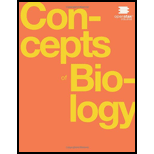
Figure 7.2 If a mutation occurs so that a

Figure 7.2 (a) In animals, sexually reproducing adults form haploid gametes from diploid germ cells. (b) Fungi, such as black bread mold (Rhizopus nigricans), have haploid-dominant life cycles. (c) Plants have a life cycle that alternates between a multicellular haploid organism and a multicellular diploid organism. (credit c “fern”: modification of work by Cory Zanker; credit c “gametophyte”: modification of work by “Vlmastra”/Wikimedia Commons)
To analyze:
If a fungus can still reproduce in case the fungus undergoes mutation and is unable to produce a minus mating type.
Introduction:
Fungi can reproduce both sexually and asexually. Sexual reproduction can occur by fusion of two gametes that can be similar in size (isogamous), or dissimilar (anisogamous). Asexual reproduction occurs by fragmentation or asexual spore formation such as zoospores.
Explanation of Solution
Yes, a fungus that is unable to produce minus mating type will be able to reproduce. Reproduction in the fungus can also occur asexually by fragmentation of its hyphae to produce a daughter fungus or asexual spores.
The fungus that is unable to multiply sexually can still reproduce asexually by spore formation and fragmentation.
Want to see more full solutions like this?
Chapter 7 Solutions
Concepts of Biology
Additional Science Textbook Solutions
College Physics
Human Biology: Concepts and Current Issues
Human Anatomy & Physiology (2nd Edition)
Genetic Analysis: An Integrated Approach (2nd Edition)
Human Physiology: An Integrated Approach (7th Edition)
Fundamentals of Anatomy & Physiology (11th Edition)
 Human Anatomy & Physiology (11th Edition)BiologyISBN:9780134580999Author:Elaine N. Marieb, Katja N. HoehnPublisher:PEARSON
Human Anatomy & Physiology (11th Edition)BiologyISBN:9780134580999Author:Elaine N. Marieb, Katja N. HoehnPublisher:PEARSON Biology 2eBiologyISBN:9781947172517Author:Matthew Douglas, Jung Choi, Mary Ann ClarkPublisher:OpenStax
Biology 2eBiologyISBN:9781947172517Author:Matthew Douglas, Jung Choi, Mary Ann ClarkPublisher:OpenStax Anatomy & PhysiologyBiologyISBN:9781259398629Author:McKinley, Michael P., O'loughlin, Valerie Dean, Bidle, Theresa StouterPublisher:Mcgraw Hill Education,
Anatomy & PhysiologyBiologyISBN:9781259398629Author:McKinley, Michael P., O'loughlin, Valerie Dean, Bidle, Theresa StouterPublisher:Mcgraw Hill Education, Molecular Biology of the Cell (Sixth Edition)BiologyISBN:9780815344322Author:Bruce Alberts, Alexander D. Johnson, Julian Lewis, David Morgan, Martin Raff, Keith Roberts, Peter WalterPublisher:W. W. Norton & Company
Molecular Biology of the Cell (Sixth Edition)BiologyISBN:9780815344322Author:Bruce Alberts, Alexander D. Johnson, Julian Lewis, David Morgan, Martin Raff, Keith Roberts, Peter WalterPublisher:W. W. Norton & Company Laboratory Manual For Human Anatomy & PhysiologyBiologyISBN:9781260159363Author:Martin, Terry R., Prentice-craver, CynthiaPublisher:McGraw-Hill Publishing Co.
Laboratory Manual For Human Anatomy & PhysiologyBiologyISBN:9781260159363Author:Martin, Terry R., Prentice-craver, CynthiaPublisher:McGraw-Hill Publishing Co. Inquiry Into Life (16th Edition)BiologyISBN:9781260231700Author:Sylvia S. Mader, Michael WindelspechtPublisher:McGraw Hill Education
Inquiry Into Life (16th Edition)BiologyISBN:9781260231700Author:Sylvia S. Mader, Michael WindelspechtPublisher:McGraw Hill Education





